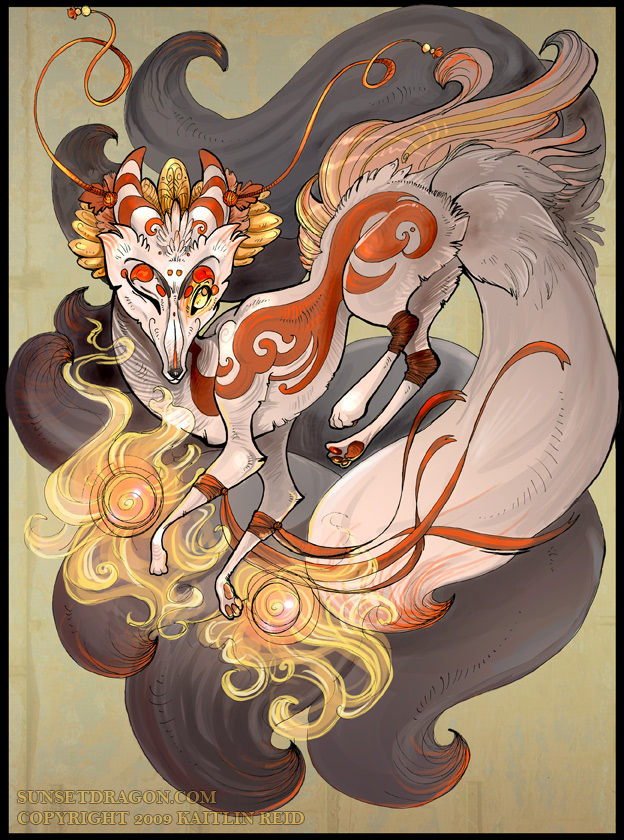
House Names and what they mean
So we all know what the house names are this year but let’s get a little more info on what they mean.
HOUSE KAMEOSA!
HOUSE TSUKI NO USAGI!
HOUSE BASAN!
HOUSE KITSUNE!
So lets start with….

KAMEOSA
In Japanese mythology, Kameosa (瓶長、甕長, Long Bottle) is a youkai that takes the form of a jar.
Appearance
Kameosa takes the form of an old jar, usually of water or sake, and sometimes this can take upon itself humanoid features much like those of Tsukumogami.
Powers
Kameosa seem to be entirely beneficial, as any liquid store inside them will never run out. It spontaneously produce an inexhaustible supply of rice, sake, wine, water, or possibly any fluid one might put into it.
Next is


TSUKI NO USAGI The Moon rabbit
Also Sailor Moon refrence
The Moon rabbit in folklore is a rabbit that lives on the Moon, based on pareidolia that identifies the markings of the Moon as a rabbit. The story exists in many cultures, prominently in East Asian folklore and Aztec mythology.[1][2] In East Asia, it is seen pounding in a mortar and pestle, but the contents of the mortar differ among Chinese, Japanese, and Korean folklore. In Chinese folklore, it is often portrayed as a companion of the Moon goddess Chang’e, constantly pounding the elixir of life for her; but in Japanese and Korean versions, it is pounding the ingredients for rice cake.
Thanks to Ryan Skeet for the heads up
Sailor Moon (セーラームーン, Sērā Mūn?), officially spelled Sailormoon in Japan, is a fictional character in the Sailor Moon media franchise, appearing as the protagonist and titular character. She is formally named Neo-Queen Serenity in the 30th century, but in the 20th century her civilian name, Usagi Tsukino (月野うさぎ, Tsukino Usagi?), becomes Serena Tsukino in the English-language versions. A carefree schoolgirl, she can transform herself into Sailor Moon, the de facto leader of the series’ primary heroines the Sailor Senshi.
Due to the series’ international popularity (and her distinctive odango hairstyle), she is one of the most immediately recognizable and iconic anime characters worldwide. She is the only character who appears in all 200 episodes of the anime, all 52 acts of the manga and all 51 acts of the live-action series.
Serena, Usagi’s given name in the English-language versions of the series, derives from her being the reincarnation of Princess Serenity. In the English manga she is mostly called by the nickname Bunny (usagi literally means “rabbit”). Her boyfriend for most of the series, Mamoru Chiba, calls her by the affectionate nickname ‘”Usa-ko”‘, “little bunny” (a diminutive, the suffix -ko meaning “child”).
Than we have

BASAN
Basan (波山), alternatively referred to as Basabasa (婆娑婆娑) or Inuhōō (犬鳳凰), is a fowl-like bird illustrated in the Ehon Hyaku Monogatari that lives in the mountains of Iyo Province (today Ehime Prefecture). According to the description on the illustration, it resembles a large chicken and breathes ghost-fire from its mouth. It is described as having a bright red cockscomb and spits an equally brilliant-hued fire. The fire is a cold fire, a glow, and it does not burn.
It usually lives in the bamboo groves of mountain recesses but sometimes materializes in human villages late at night. When the Basan flaps its wings, an eerie rustling (“basabasa”) sound can be heard. Supposedly, if a human hears the sound and looks outside, the bird’s form will suddenly vanish.
And finally

KITSUNE
Kitsune (狐IPA: [kitsɯne] is the Japanese word for fox. Foxes are a common subject of Japanese folklore; in English, kitsune refers to them in this context. Stories depict them as intelligent beings and as possessing magical abilities that increase with their age and wisdom. Foremost among these is the ability to assume human form. While some folktales speak of kitsune employing this ability to trick others—as foxes in folklore often do—other stories portray them as faithful guardians, friends, lovers, and wives.
Foxes and human beings lived close together in ancient Japan; this companionship gave rise to legends about the creatures. Kitsune have become closely associated with Inari, a Shinto kami or spirit, and serve as its messengers. This role has reinforced the fox’s supernatural significance. The more tails a kitsune has—they may have as many as nine—the older, wiser, and more powerful it is. Because of their potential power and influence, some people make offerings to them as to a deity.
So there’s just a little insight into what they all mean 🙂



